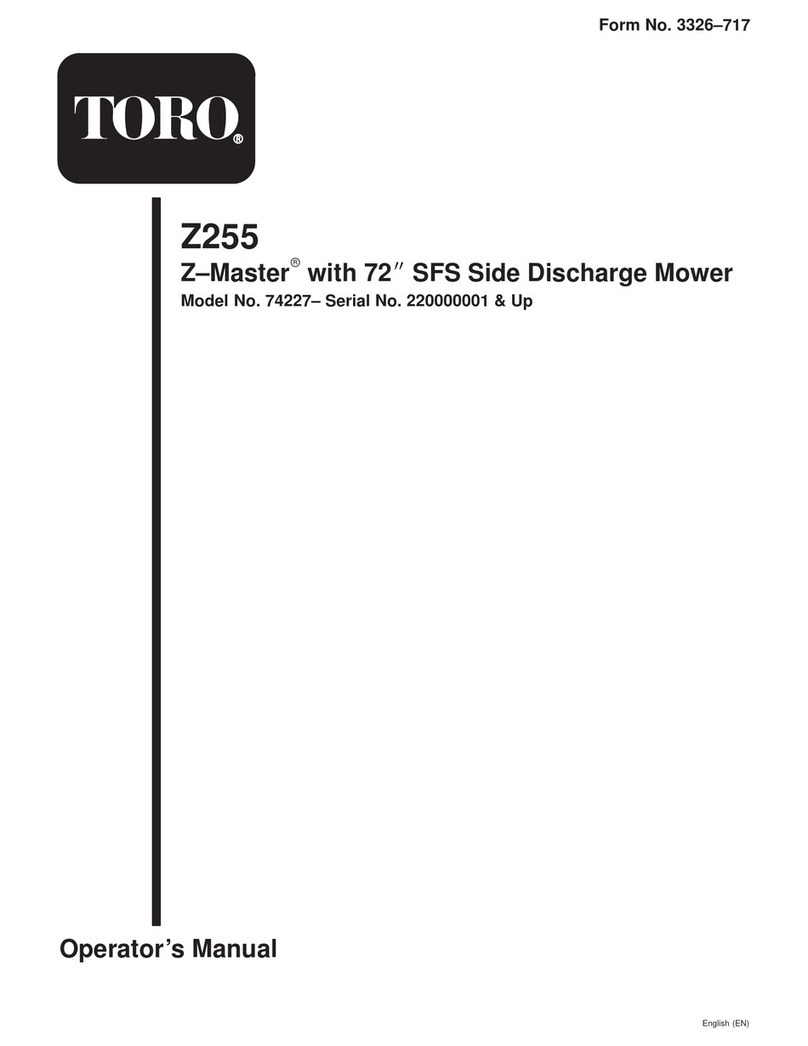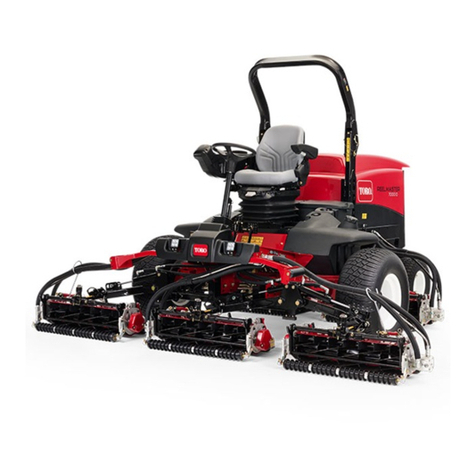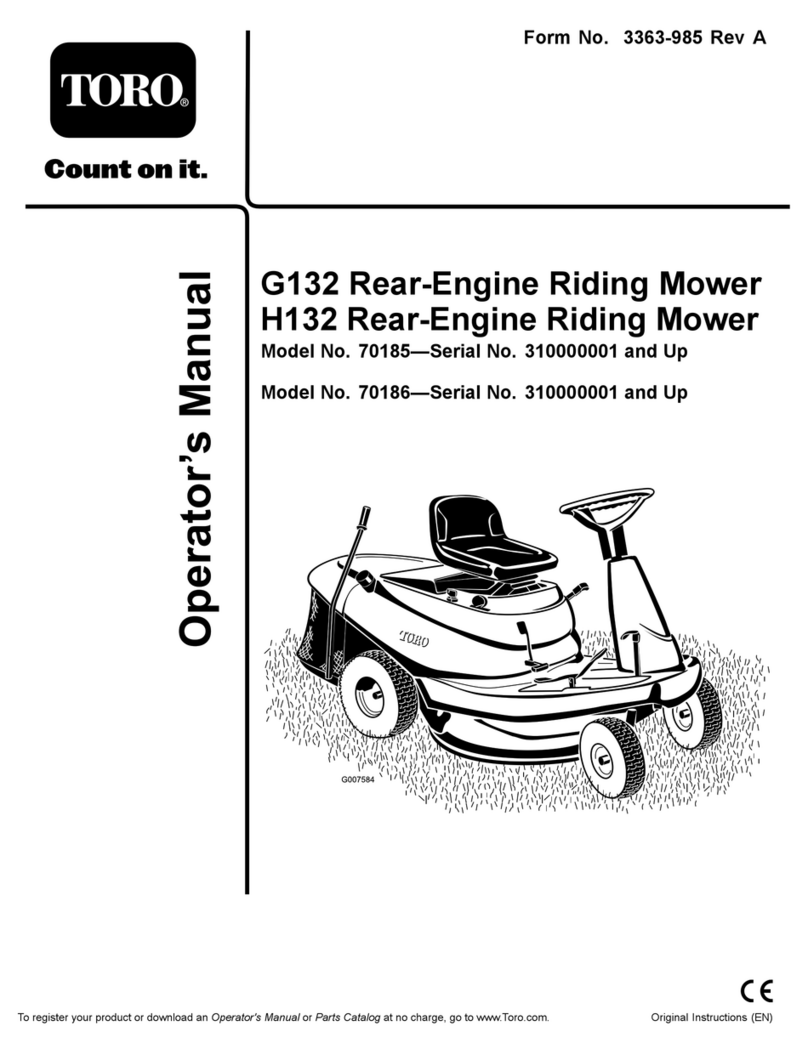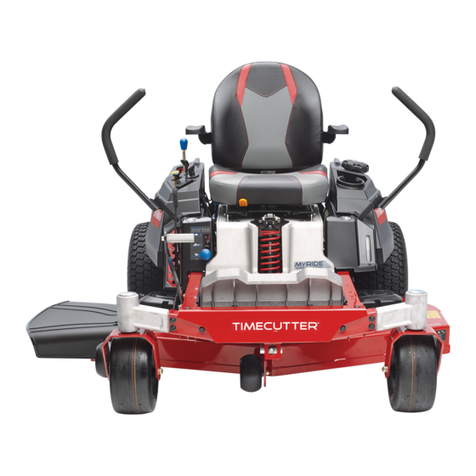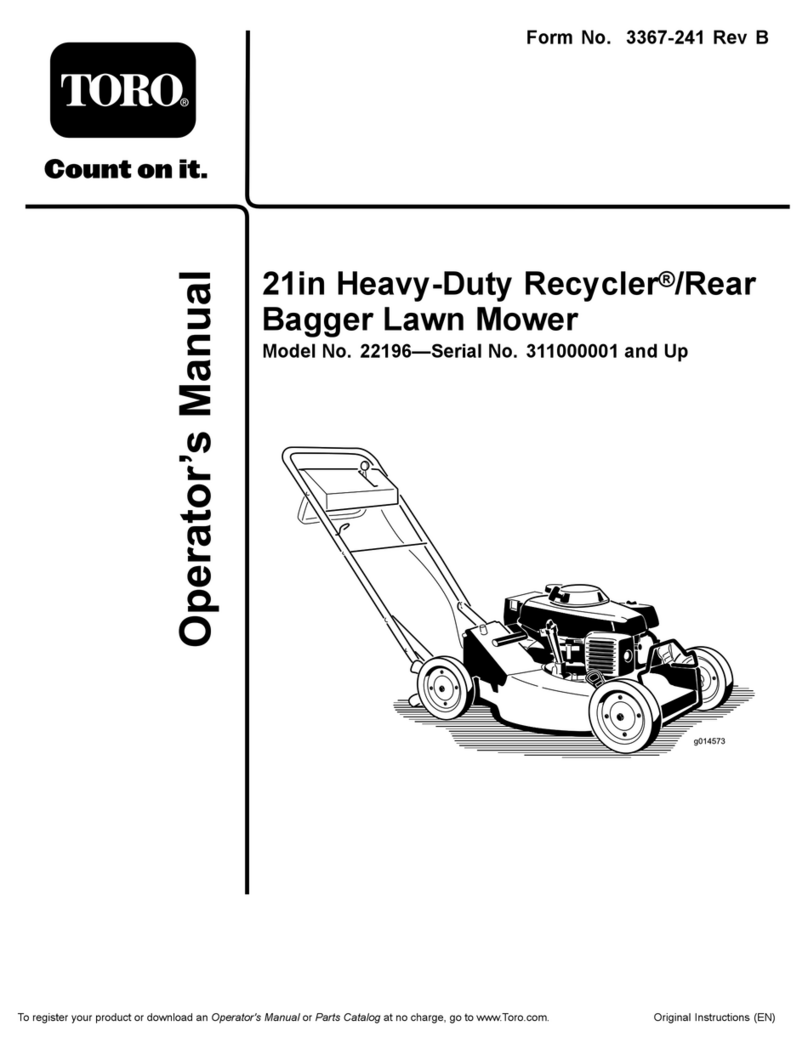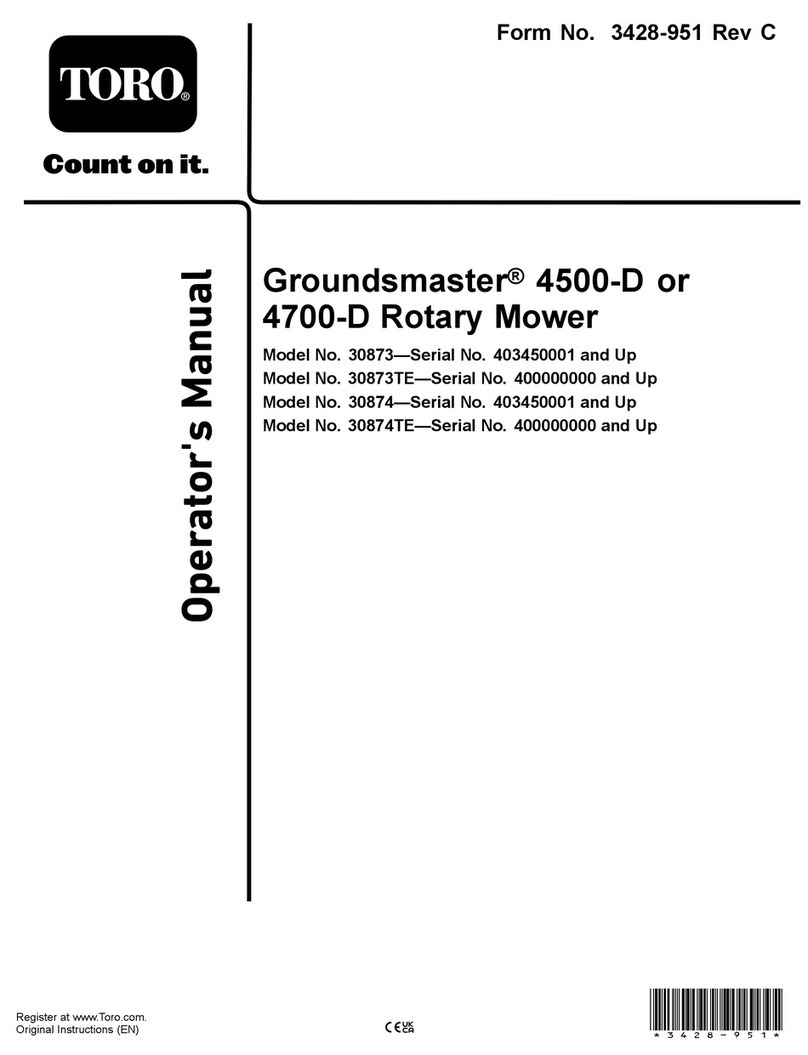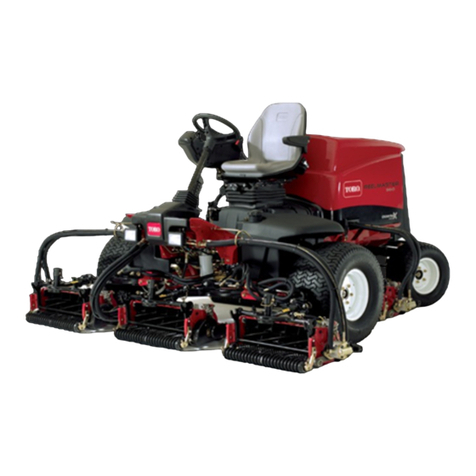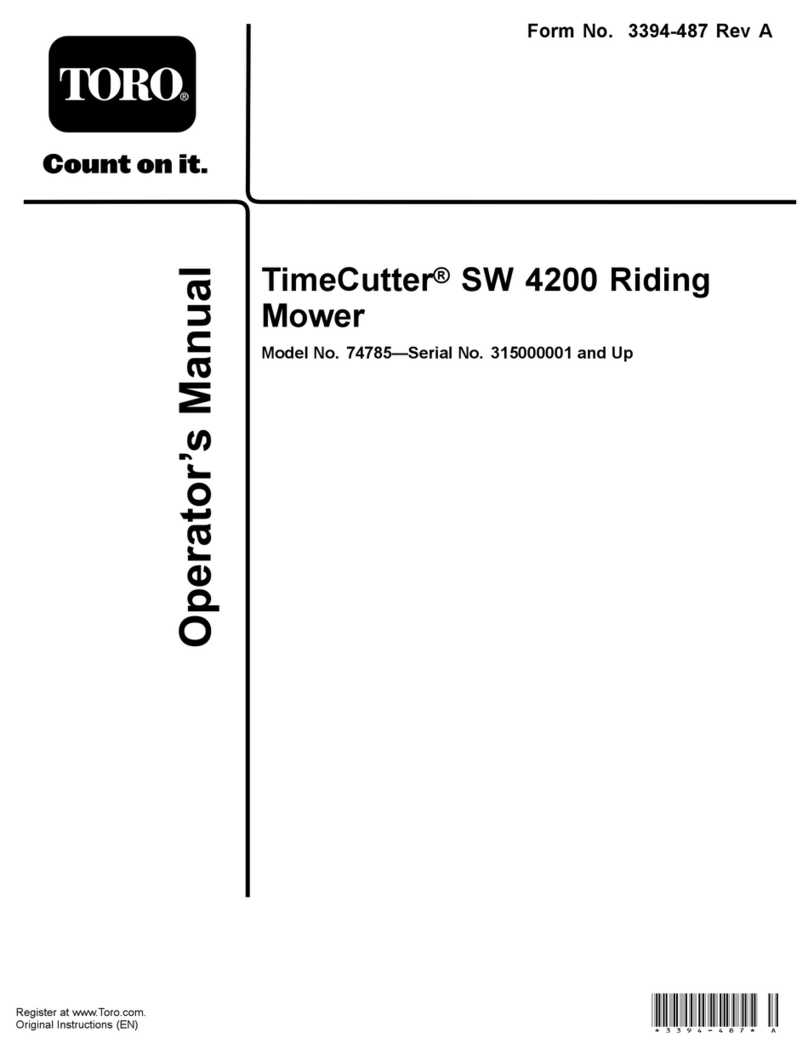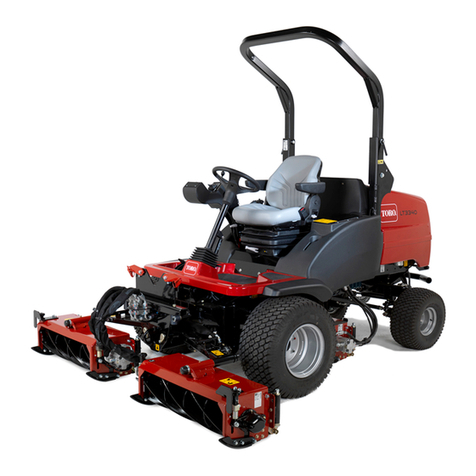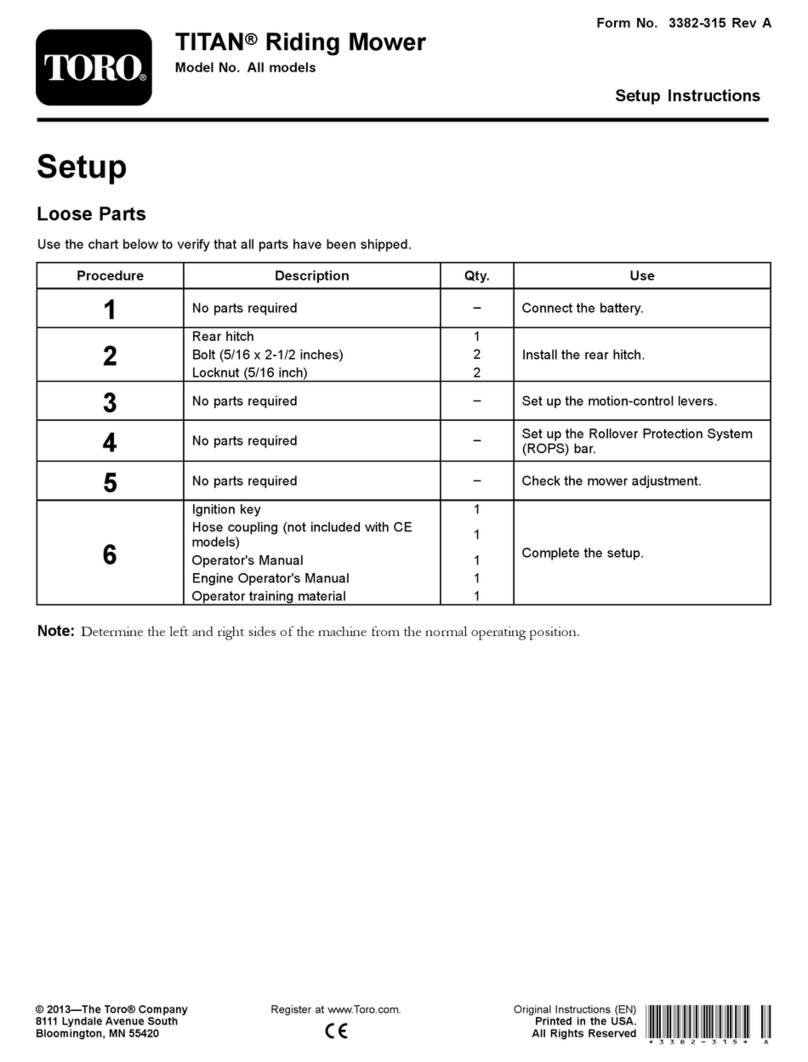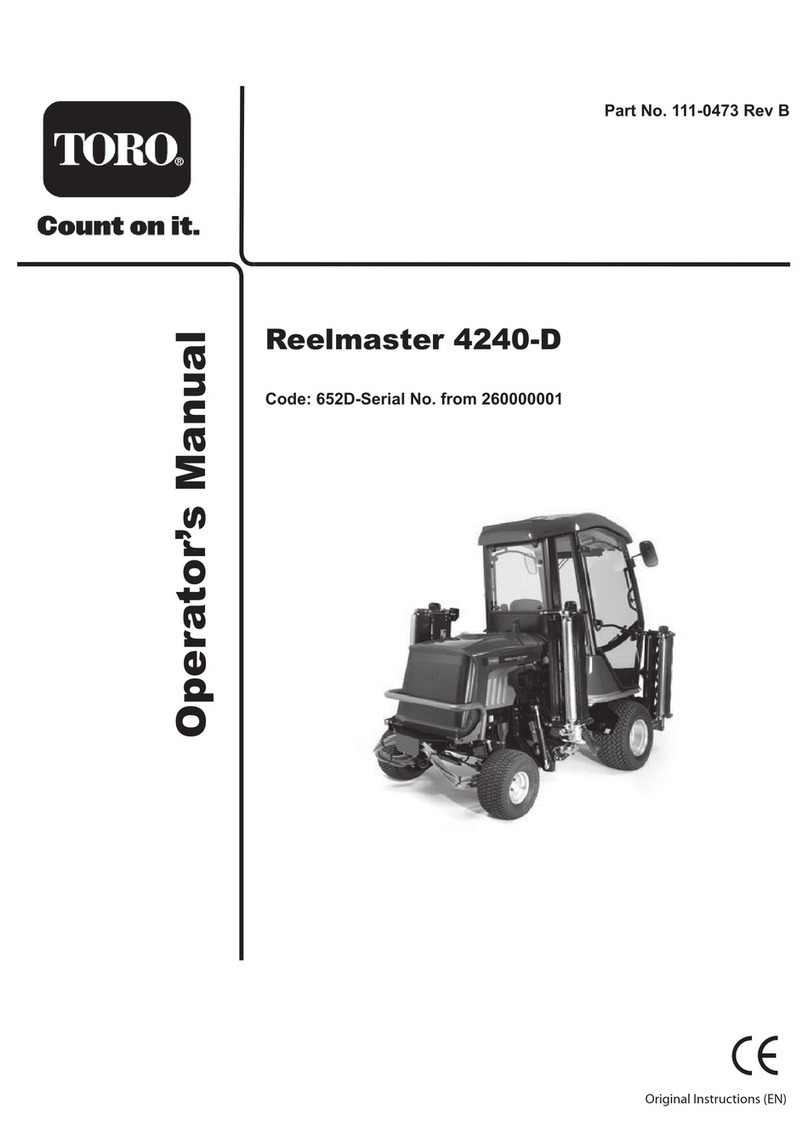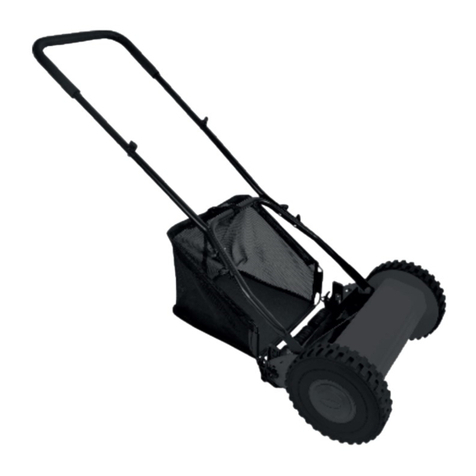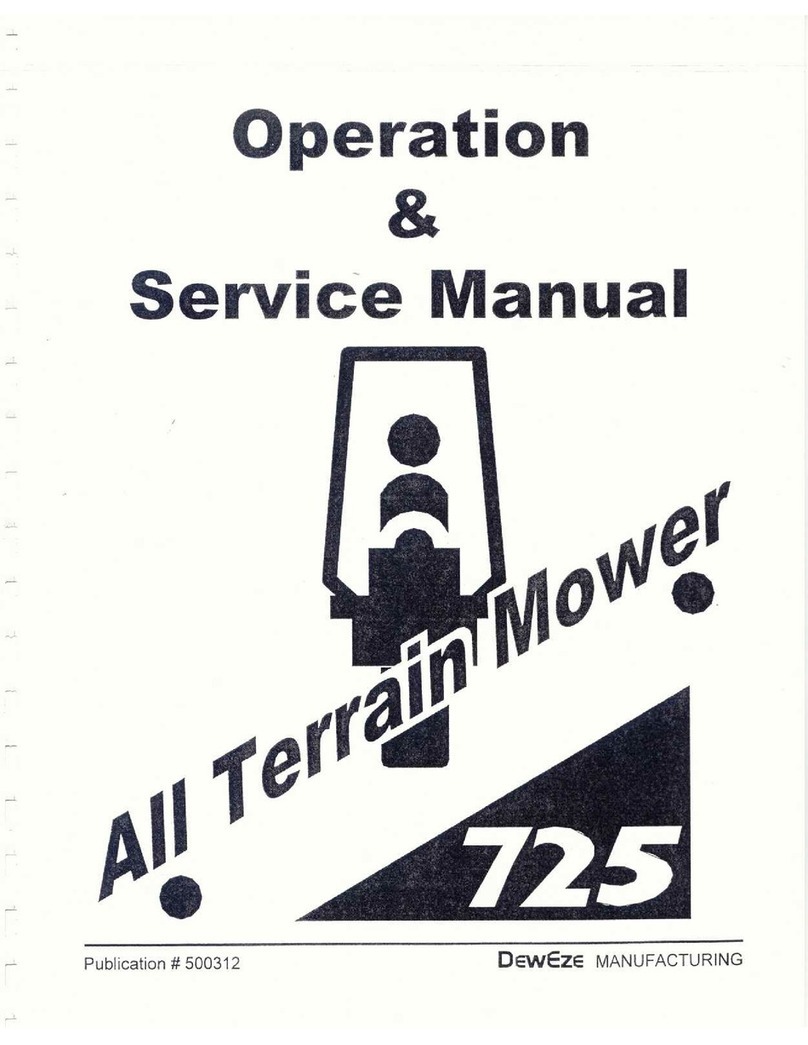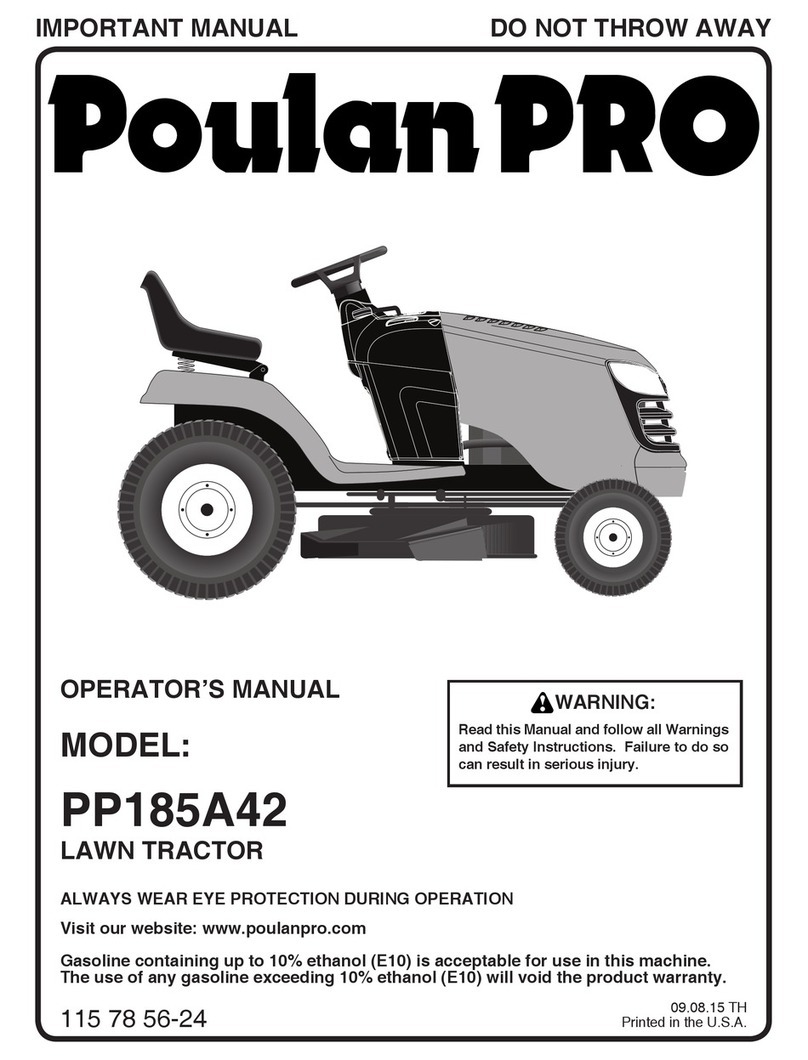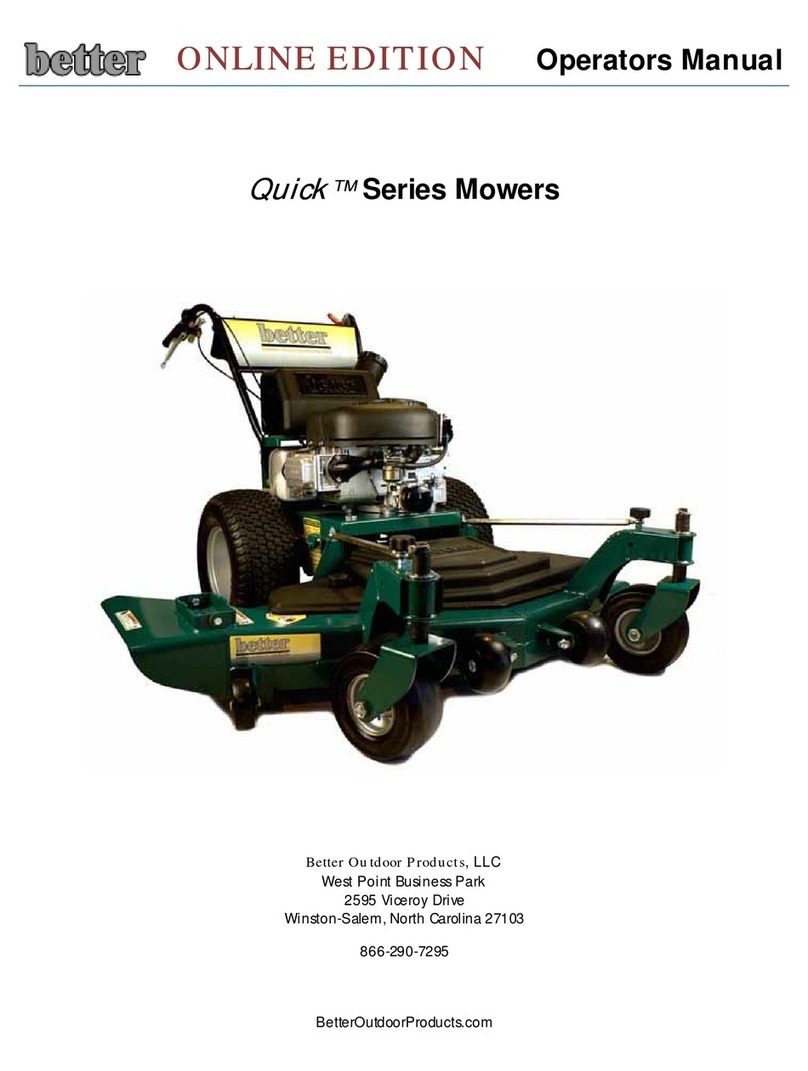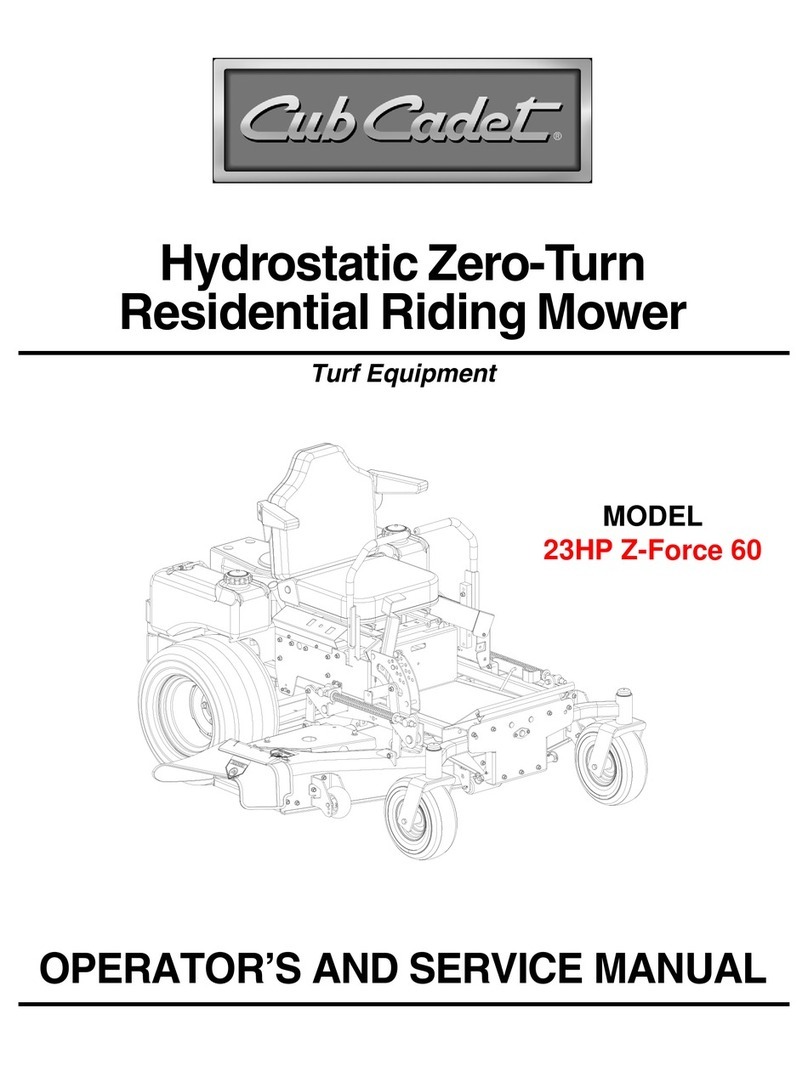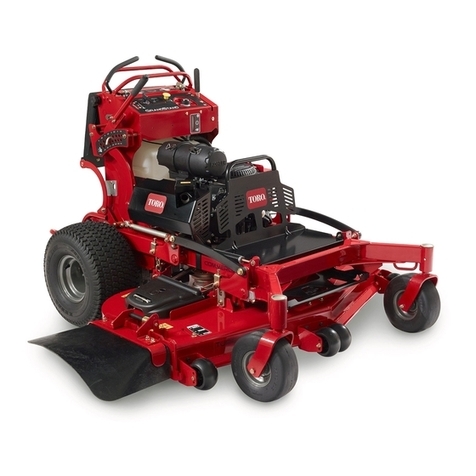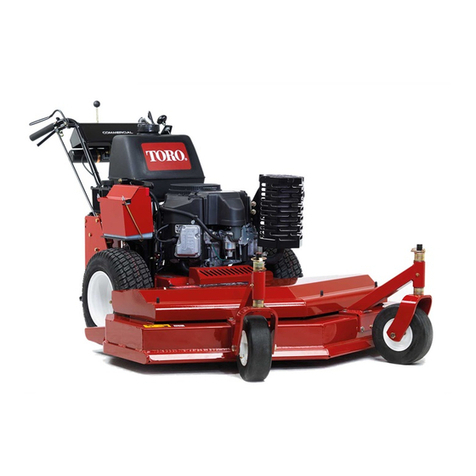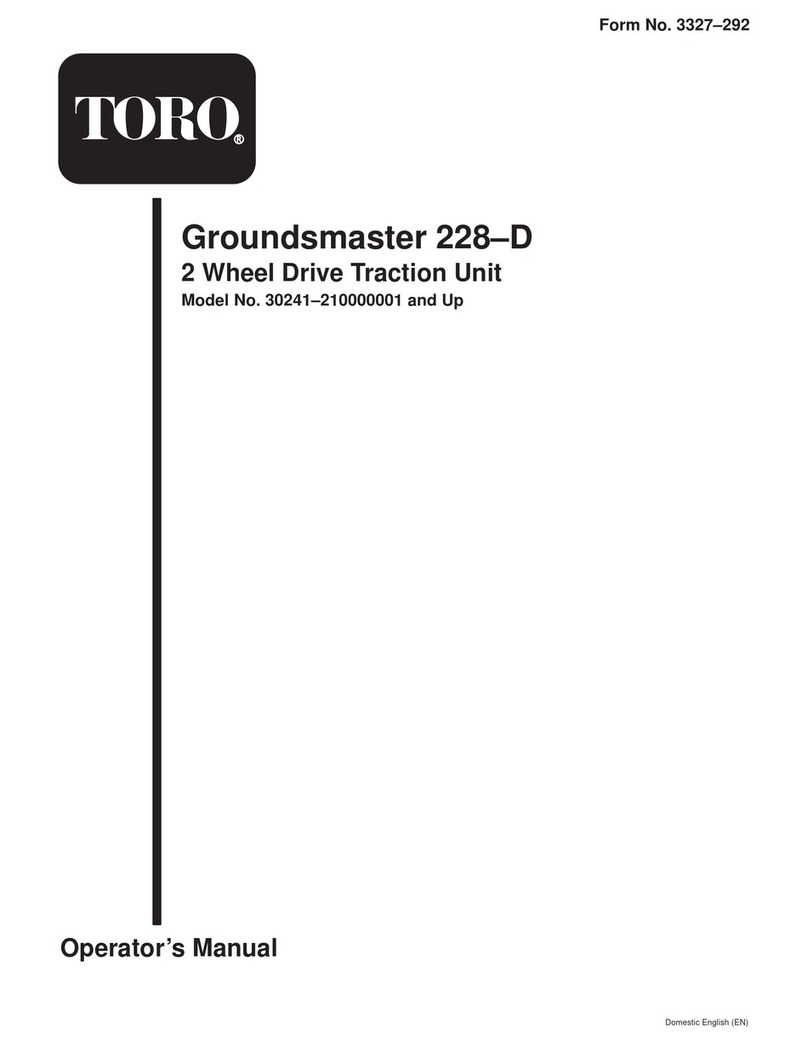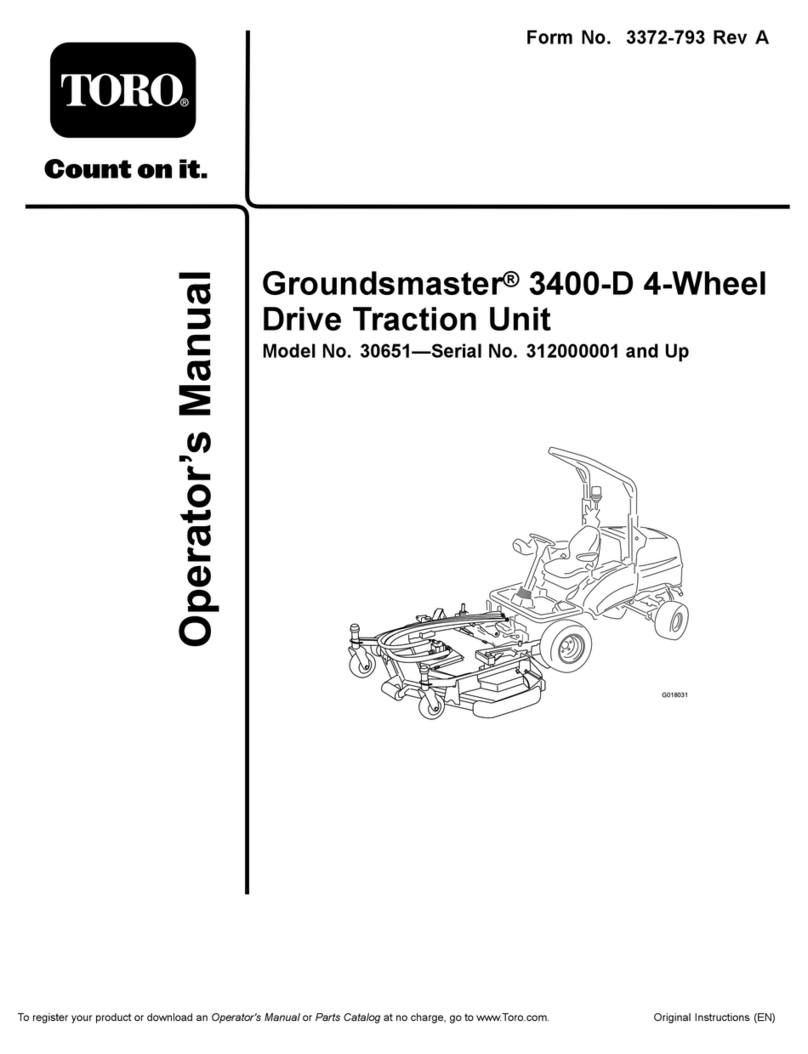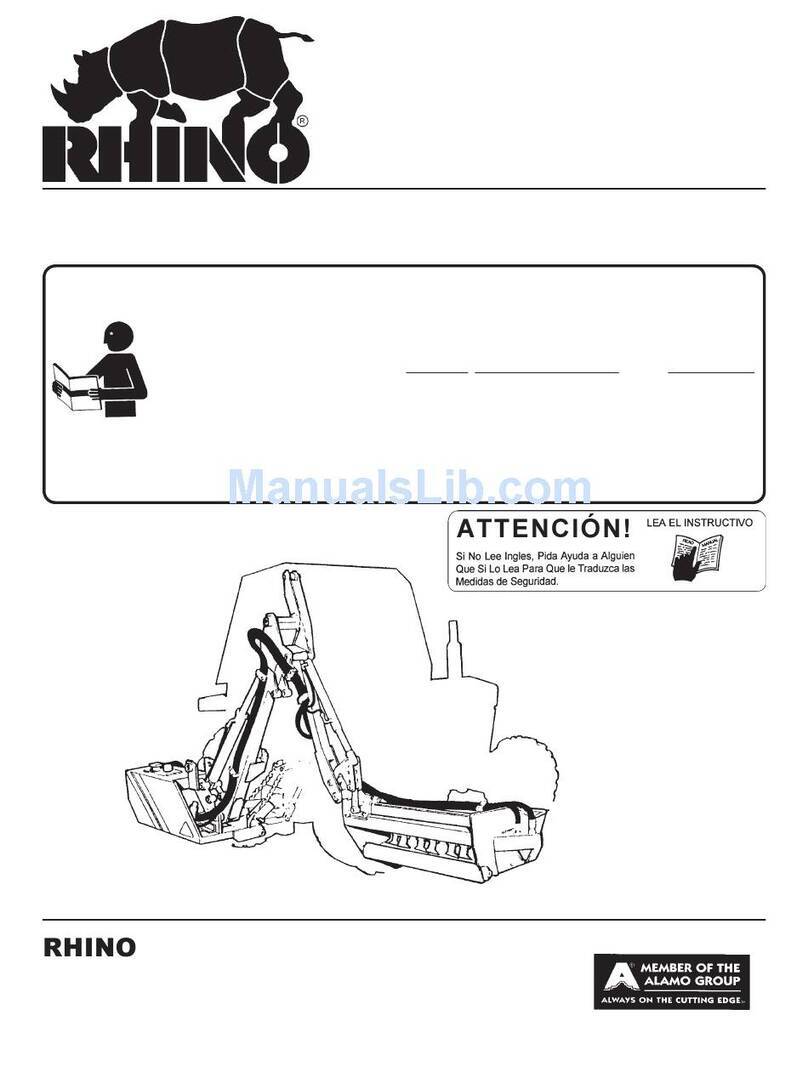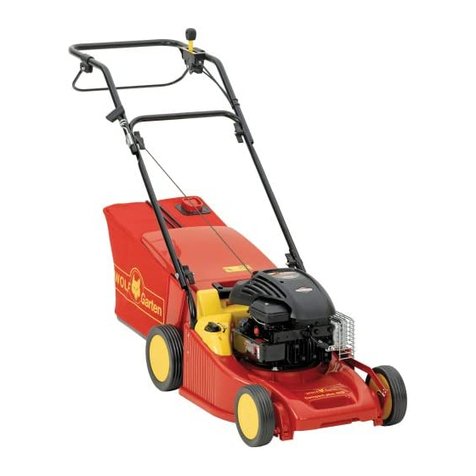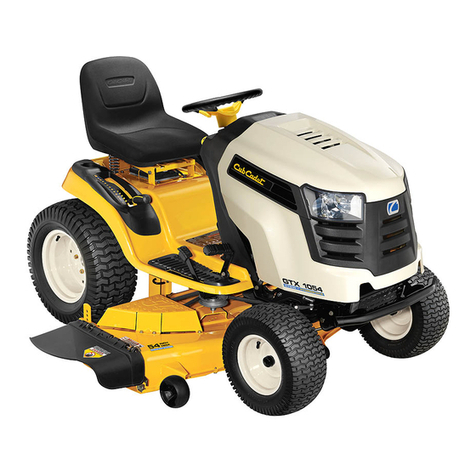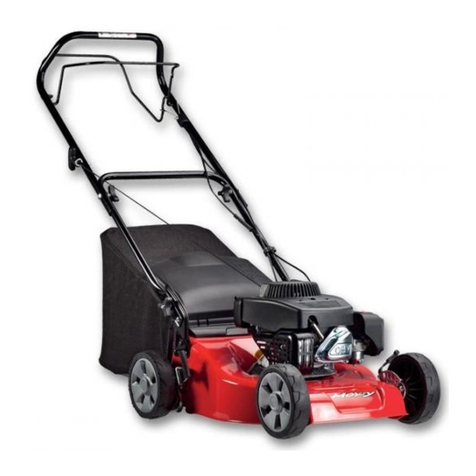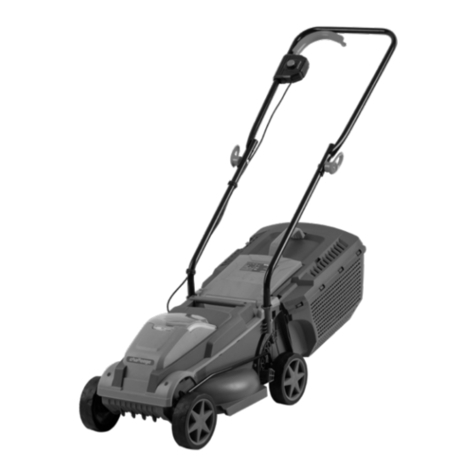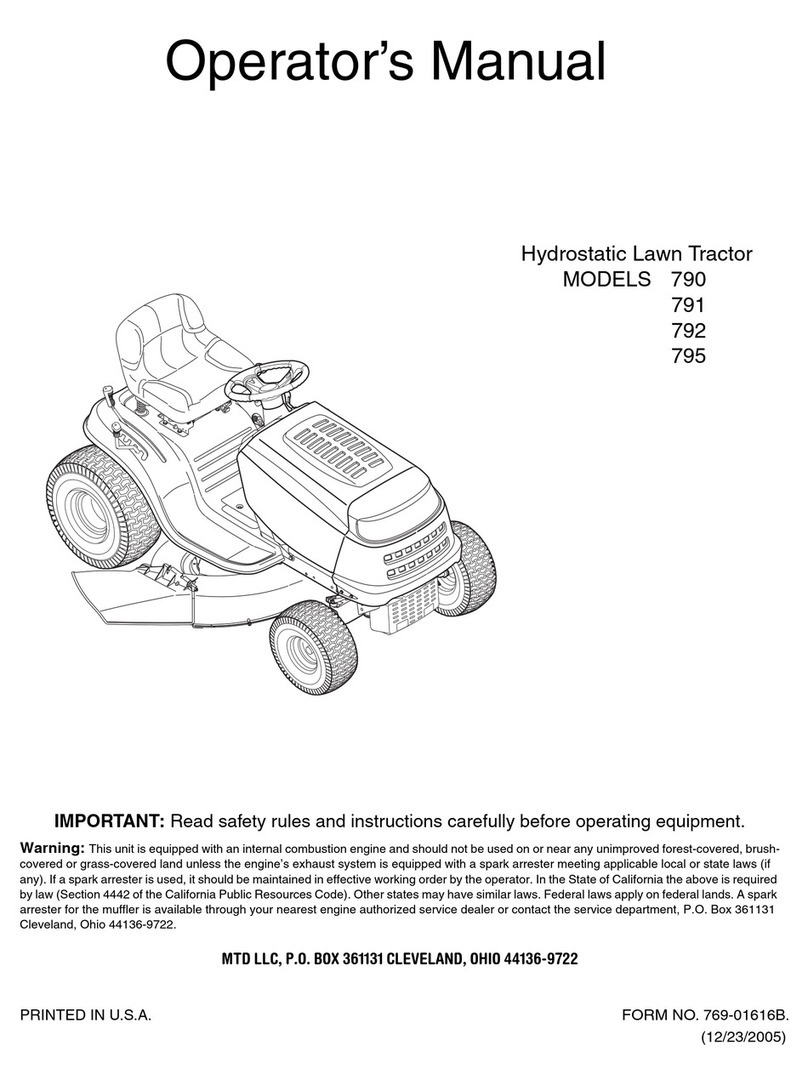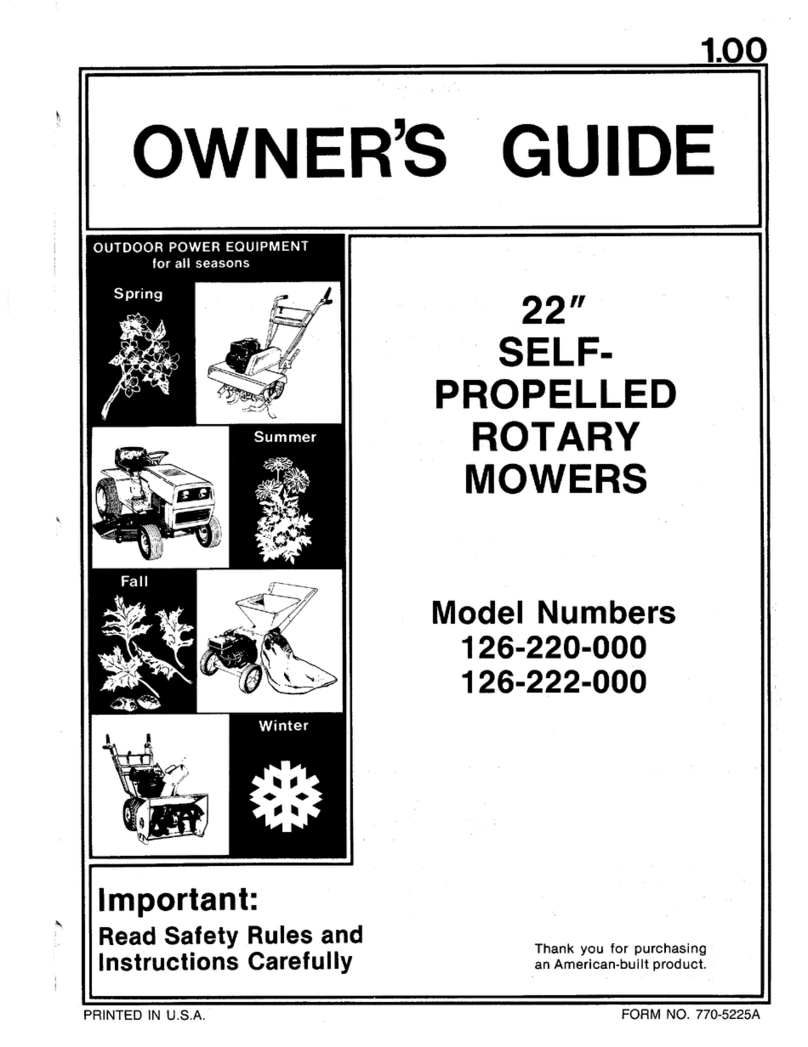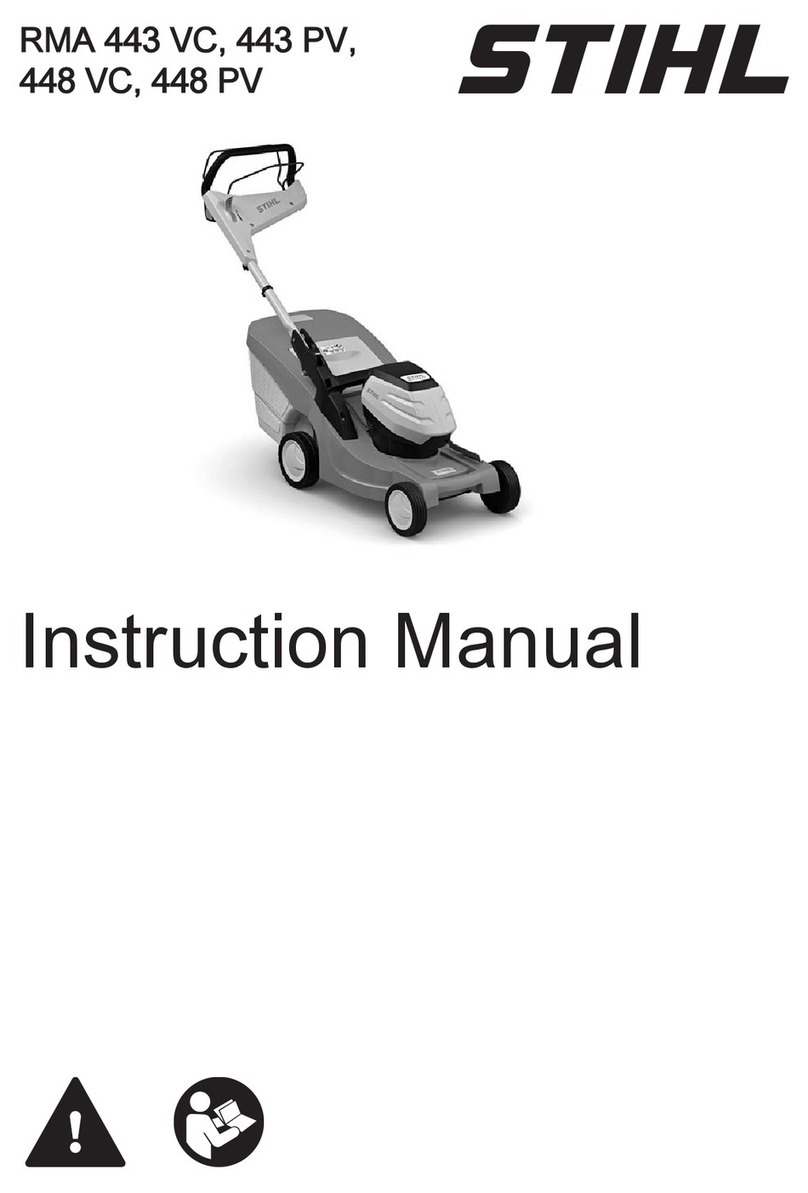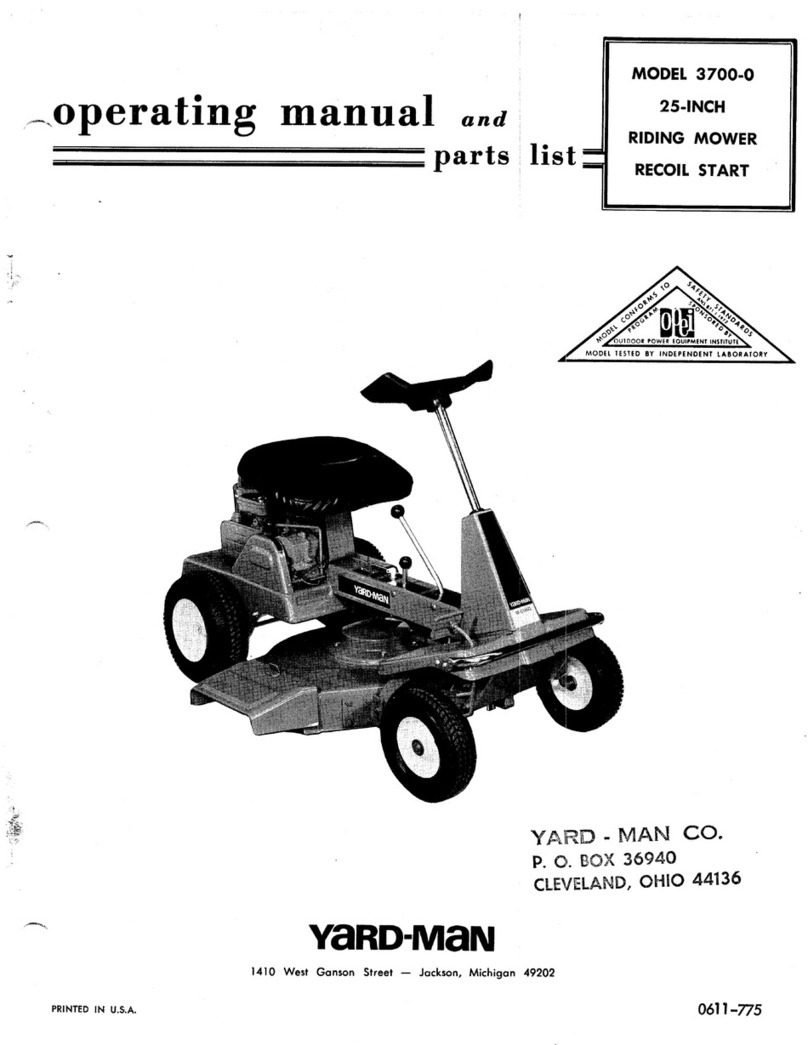
2
All Rights Reserved
Printed in the USA
2001 by The Toro Company
8111 Lyndale Avenue South
Bloomington, MN 55420-1196
The engine exhaust from this product contains
chemicals known to the State of California to cause
cancer, birth defects, or other reproductive harm.
Warning
Contents
Page
Introduction 2. . . . . . . . . . . . . . . . . . . . . . . . . . . . . . . . .
Safety 3. . . . . . . . . . . . . . . . . . . . . . . . . . . . . . . . . . . . . .
Safe Operating Practices 3. . . . . . . . . . . . . . . . . . . .
Toro Mower Safety 4. . . . . . . . . . . . . . . . . . . . . . . .
Sound Pressure Level 5. . . . . . . . . . . . . . . . . . . . . . .
Vibration Level 5. . . . . . . . . . . . . . . . . . . . . . . . . . . .
Safety and Instruction Decals 6. . . . . . . . . . . . . . . . .
Slope Chart 9. . . . . . . . . . . . . . . . . . . . . . . . . . . . . . .
Specifications 11. . . . . . . . . . . . . . . . . . . . . . . . . . . . . . . .
General Specifications 11. . . . . . . . . . . . . . . . . . . . .
Measurements 12. . . . . . . . . . . . . . . . . . . . . . . . . . . .
Optional Equipment 12. . . . . . . . . . . . . . . . . . . . . . . .
Setup 12. . . . . . . . . . . . . . . . . . . . . . . . . . . . . . . . . . . . . .
Loose Parts 12. . . . . . . . . . . . . . . . . . . . . . . . . . . . . . .
Installing the Rear Wheel 14. . . . . . . . . . . . . . . . . . . .
Installing the Seat 14. . . . . . . . . . . . . . . . . . . . . . . . . .
Adjusting the Rear Carrier Frame Height 15. . . . . . .
Mounting the Carrier Frames to the Cutting Units 15
Installing the Front Lift Arms 15. . . . . . . . . . . . . . . .
Mounting the Cutting Unit Drive Motors 16. . . . . . .
Mounting the Cutting Units 17. . . . . . . . . . . . . . . . . .
Installing the Counterbalance Springs 17. . . . . . . . . .
Adding Rear Ballast 19. . . . . . . . . . . . . . . . . . . . . . . .
Affixing the Decals 20. . . . . . . . . . . . . . . . . . . . . . . .
Activating and Charging the Battery 20. . . . . . . . . . .
Before Operating 21. . . . . . . . . . . . . . . . . . . . . . . . . . . . .
Checking the Crankcase Oil 21. . . . . . . . . . . . . . . . . .
Filling the Fuel Tank 21. . . . . . . . . . . . . . . . . . . . . . .
Checking the Cooling System 22. . . . . . . . . . . . . . . .
Checking the Hydraulic System Fluid 22. . . . . . . . . .
Inspecting the Fuel Filter 23. . . . . . . . . . . . . . . . . . . .
Checking the Tire Pressure 24. . . . . . . . . . . . . . . . . .
Checking the Reel to Bedknife Contact 24. . . . . . . . .
Checking the Torque of the Wheel Nuts 24. . . . . . . .
Operation 24. . . . . . . . . . . . . . . . . . . . . . . . . . . . . . . . . . .
Controls 24. . . . . . . . . . . . . . . . . . . . . . . . . . . . . . . . .
Starting and Stopping the Engine 27. . . . . . . . . . . . . .
Bleeding the Fuel System 27. . . . . . . . . . . . . . . . . . . .
Checking the Operation of the Interlock Switches 28
Page
Towing the Traction Unit 28. . . . . . . . . . . . . . . . . . . .
Operating Characteristics 29. . . . . . . . . . . . . . . . . . . .
Selecting the Clip Rate (Reel Speed) 29. . . . . . . . . . .
Training Period 30. . . . . . . . . . . . . . . . . . . . . . . . . . . .
Before Mowing 30. . . . . . . . . . . . . . . . . . . . . . . . . . .
Transport Operation 30. . . . . . . . . . . . . . . . . . . . . . . .
Inspection and Clean-Up After Mowing 30. . . . . . . .
Maintenance 31. . . . . . . . . . . . . . . . . . . . . . . . . . . . . . . . .
Recommended Maintenance Schedule 31. . . . . . . . .
Daily Maintenance Checklist 32. . . . . . . . . . . . . . . . .
Service Interval Chart 33. . . . . . . . . . . . . . . . . . . . . .
Greasing the Bearings and Bushings 33. . . . . . . . . . .
Removing the Hood 35. . . . . . . . . . . . . . . . . . . . . . . .
General Air Cleaner Maintenance 35. . . . . . . . . . . . .
Cleaning the Radiator and Screen 36. . . . . . . . . . . . .
Changing the Engine Oil and Filter 36. . . . . . . . . . . .
Changing the Hydraulic System Fluid and Filter 36. .
Hydraulic System Test Ports 37. . . . . . . . . . . . . . . . .
Replacing the Fuel Filter 37. . . . . . . . . . . . . . . . . . . .
Adjusting the Transmission for Neutral 38. . . . . . . . .
Adjusting the Belts 39. . . . . . . . . . . . . . . . . . . . . . . . .
Adjusting the Traction Pedal 39. . . . . . . . . . . . . . . . .
Adjusting the Traction Pedal Damper 40. . . . . . . . . .
Adjusting the Hand Brake 40. . . . . . . . . . . . . . . . . . .
Battery Care 40. . . . . . . . . . . . . . . . . . . . . . . . . . . . . .
Storing the Battery 41. . . . . . . . . . . . . . . . . . . . . . . . .
Fuses 41. . . . . . . . . . . . . . . . . . . . . . . . . . . . . . . . . . . .
Backlapping 41. . . . . . . . . . . . . . . . . . . . . . . . . . . . . .
Electrical Schematic 43. . . . . . . . . . . . . . . . . . . . . . . .
Hydraulic Schematic (Model No. 03422—2WD) 44.
Hydraulic Schematic (Model No. 03427—3WD) 45.
California Emission Control System Warranty
Statement 49. . . . . . . . . . . . . . . . . . . . . . . . . . . . . . .
The Toro General Commercial Products Warranty 52. . .
Introduction
Read this manual carefully to learn how to operate and
maintain your product properly. The information in this
manual can help you and others avoid injury and product
damage. Although Toro designs and produces safe
products, you are responsible for operating the product
properly and safely.
Whenever you need service, genuine Toro parts, or
additional information, contact an Authorized Service
Dealer or Toro Customer Service and have the model and
serial numbers of your product ready. The two numbers are
stamped into a plate that is riveted to the frame at the rear
of the mower.
